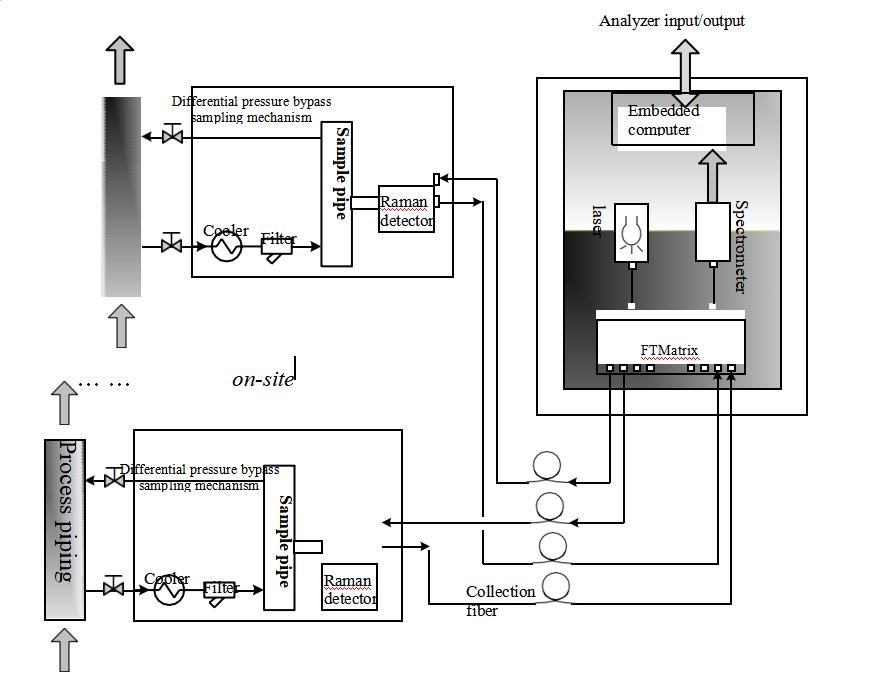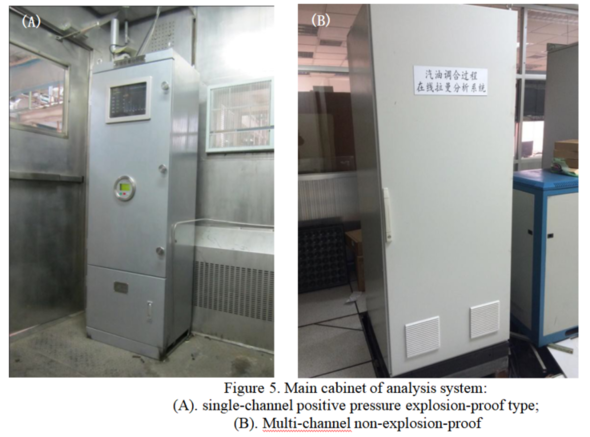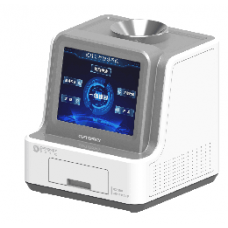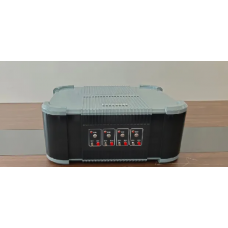Your shopping cart is empty!
Online Raman Analysis System
Availability: In Stock
Online Raman Analysis System
Product Code: ATR7000
application
What are the advantages of choosing the ATR7000 Online Raman Analysis System?1.Introduce Online Raman Analysis System- The ATR7000 series online Raman analysis system provide on-line analysis for the mixture composition contents, and it’s self-developed by our company based on the research experience in the past ten years. The ATR7000 series online Raman system can provide fast, accurate and stable detection methods for the composition and properties of various homogeneous liquid mixtures. By building a corresponding quantitative analysis model, the system can be widely used in various types of companies. Continuous or intermittent production process, real-time online detection of its product composition and content, and provide key measurement information for advanced control and real-time optimization.
- Due to in process application features, the ATR7000 series analysis system can be directly used outdoors in the hazardous area or in the analysis cabin in a form of positive pressure explosion-proof. When the process sampling point is relatively close to the control room or operation room (distance ≤200m), the host of the analysis system can also be installed in the control room or operation room in non-explosion-proof form, and connect to the on-site Raman probe in the hazardous area through optical fiber for remote analysis and measurement.
- Vivid peaks
- fast, efficient and accurate analysis
- Non-contact sample
- No sample consumable
- No need for sample pretreatment
- On-site maintenance free
- No effect on water or gas
- Flexible sampling and easy to use
- In 1928, the Indian scientist C. V. Raman first discovered in experimental research that when monochromatic light interacts with molecules, part of the light's wavelength will change (color changes). Through the study of the color changed scattered lights, we can acquire molecular structure information. So this effect is named The Raman effect, the resulting spectrum is called the Raman spectrum.
- The Raman effect exists in all molecules: gas,Liquid or solid, every molecule has a corresponding Raman spectrum. Raman spectroscopy can reflect both the molecular vibration information of molecular groups, such as C = C, C-C, C = O, benzene rings, etc., and the structural information of isomers. Since the Raman spectrum has the characteristic of directly reflecting the structure and content information of the measuring sample, we can use this feature to obtain the composition content or attributes of the sample by establishing a mathematical model between the Raman spectrum and the corresponding sample.
- The working principle of the online Raman analysis system is shown in Figure 1. The monochromatic excitation light emitted by the laser illuminates the sample to be measured in the sampling tube through a special optical fiber and a Raman probe. The excited Raman scattered light is collected by the probe, and transmitted to the spectrometer for spectroscopic and analog-to-digital conversion by a special optical fiber. The Raman spectrum data is pre-processed and calculated in the analytical model to obtain the composition content or quality index of the corresponding measuring sample.

- The hardware of the analysis system is mainly composed of on-site sampling cabinet and main cabinet. According to the number of detection channels, it is divided into two types: single channel and multi-channel. The system components are shown in Figures 2 and 3 respectively.
- For single-channel systems, there is only one sampling loop in the sampling cabinet. For a multi-channel system, it can take the form of multiple sampling cabinets, every one of which has only one sampling circuit; or a sampling cabinet with multiple sampling circuits inside. The specific configuration depends on the actual process pipeline conditions.
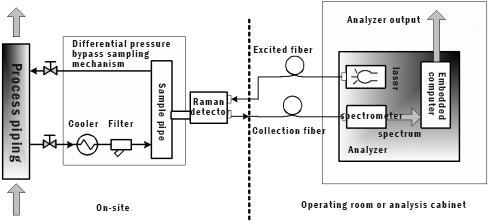
- The on-site sampling cabinet is shown in Figure 4. It is a passive intrinsically safe device (except for flameproof temperature and pressure transmitters), which can be placed directly at the process site near the sampling point. After the process pipe is properly trepanned, the sampling pipe line will be led out, and connected to the sampling cabinet through the flange. The liquid to be measured flowing through the process pipeline is driven by the pressure difference between the front and back of the process pipeline, enters the sampling cabinet through the sampling pipeline, and finally returns to the process pipeline. For high temperature liquids, water cooling is adopted in the sampling cabinet to cool down. In addition, the sampling cabinet is also equipped with an instrument air interface to maintain a slight positive pressure in the sampling cabinet and protect key components such as Raman probes from contamination.
- The main cabinet is divided into two types: positive pressure explosion-proof type and non-explosion-proof type, as shown in Figure 5. Positive pressure explosion-proof host cabinet is suitable for outdoor storage in the process site or the analysis cabin near the sampling point. Because the distance to the sampling point is short, the required optical fiber is short, the Raman signal is relatively strong, the signal-to-noise of the analysis system is relatively high, and the detection limit is low. However, the investment is relatively large, and special cooling equipment is required to ensure that the temperature in the main cabinet can meet the requirements for the normal operation of various optical and electrical components.
- Non-explosion-proof host cabinet, suitable for placing in DCS cabinets or operation rooms, especially suitable for samples with strong Raman signals, such as aromatic hydrocarbons and gasoline. When the sampling point is far away from the DCS cabinet, the strength of the Raman signal weakens significantly, so the distance between the main cabinet and the sampling cabinet is required to be less than 200 meters. The investment of the non-explosion-proof main cabinet is relatively small, no special analysis cabin or refrigeration equipment is needed, and the surrounding environment of the main cabinet is relatively clean and tidy; and standard cabinets can be used with large installation space, which is not only suitable for single-channel inspection applications but also suitable for multi-channel detection applications.
- For a single-channel analysis system, a set of separate optical equipment is set up in the main cabinet, including lasers, spectrometers, etc. The multi-channel system applies time-division multiplexing technology to multiple detection channels, so that every channel can share the same laser and spectrometer (but Raman probes still need to be set up independently), thereby reducing the allocation cost of the optical equipment in every detection channel.
Advantages of Raman spectroscopy:2. What's the Raman Effect?3.Working principle4.System composition